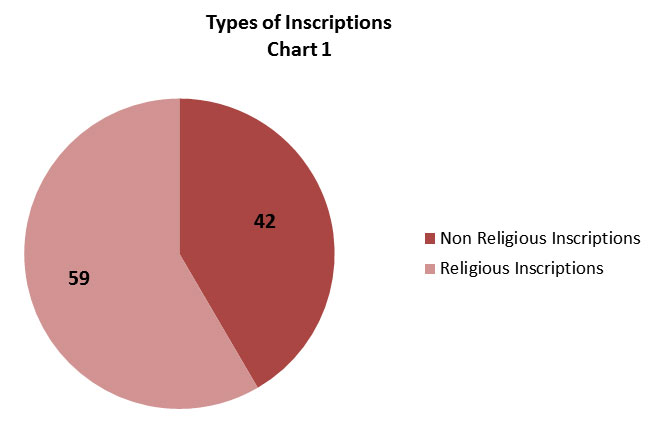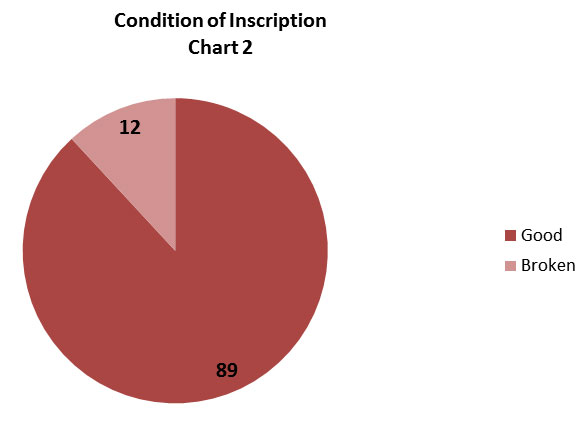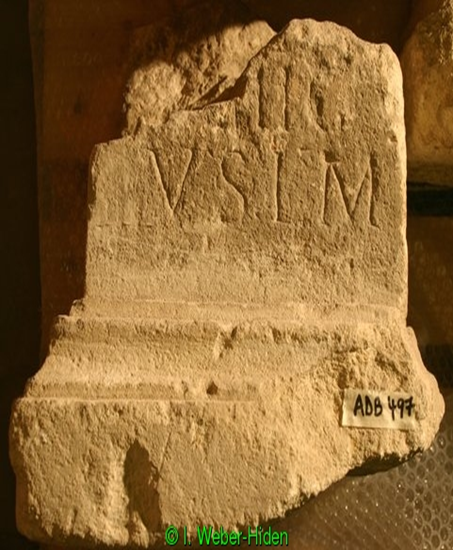Legio XIV Gemina Martia Victrix

Chart 1click to enlarge |

Chart 2click to enlarge |
This study analyzed 101 epigraphs found at Carnuntum and relating to the Legio XIV Gemina Martia Victrix. Out of these 101 inscriptions 59 were religious (refer to Chart 1), revealing the willingness of soldiers to erect alters or vows. Also out of these, 12 inscriptions had deteriorated to the point of being illegible (refer to Chart 2). As an example, inscription number 121 (Figure 2) is missing the entire top of the inscription. On the other hand, inscription number 94 (Figure 1) is in excellent condition and the epigrapher is able to obtain a thorough understanding of the inscription‘s meaning. This study focused on the epitaphs of soldiers and their families that were in good enough condition to be analyzed, 21 of the 42 that were classified as non-religious. When looking at the inscriptions, this study focused on age of death, years served, whether the soldier was active or a veteran, age of enlistment, of which century, position, town of origin/voting tribe, and the dedicator. A number of key observations were made in this study. One in particular was that the majority of ages of death were multiples of five, suggesting that age was not accurately kept. Years of service, however, were more specific. This is mostly due to the state keeping records of their service for payment. Another particular observation was the epitaphs dedicated to or by family. Out of the sample, 6 epitaphs mentioned a spouse or children (refer to Table 2). These inscriptions demonstrated that even though this was a military fort and Roman soldiers were not allowed to marry, family life was still present. The average age for enlistment was 23. More revealing was the fact that the average length of service was 15 years, revealing that only more experienced soldiers received an epitaph or were placed in more dangerous positions and were more likely to be killed. Another observation was that of the 10 that mentioned a voting tribe, 4 were from the tribe Voltinia. The towns of origin for the majority of the soldiers in this legion were located in Northern Italy. It is probable that Legion XIV recruited most of its soldiers from this general region. Finally, this study averaged each of the data headings specifically dealing with epitaphs for soldiers (refer to Table 1).
|



